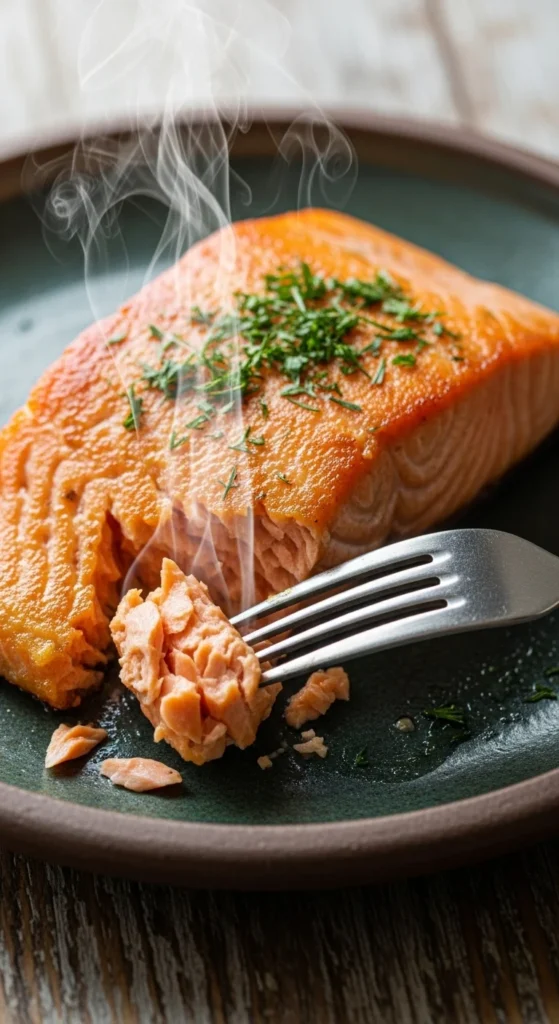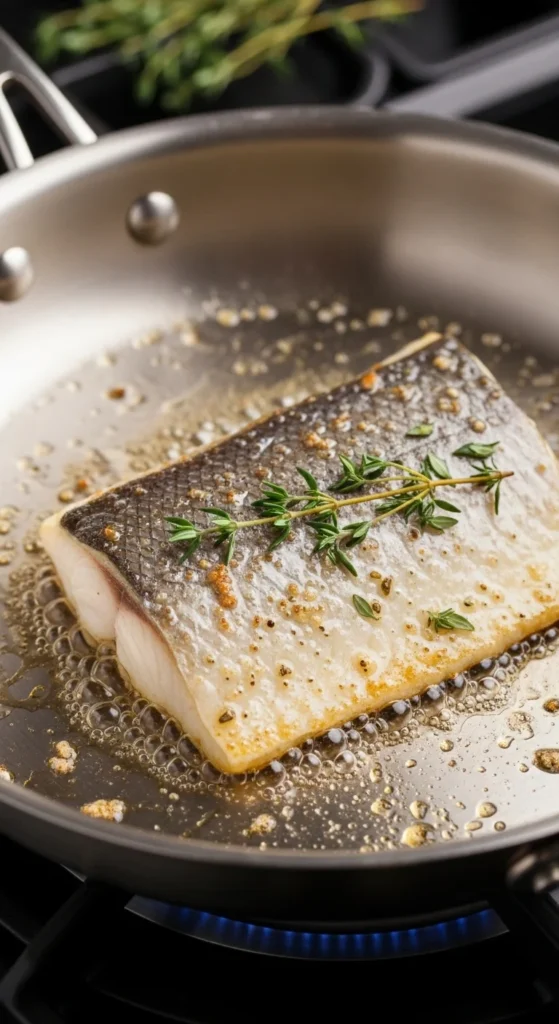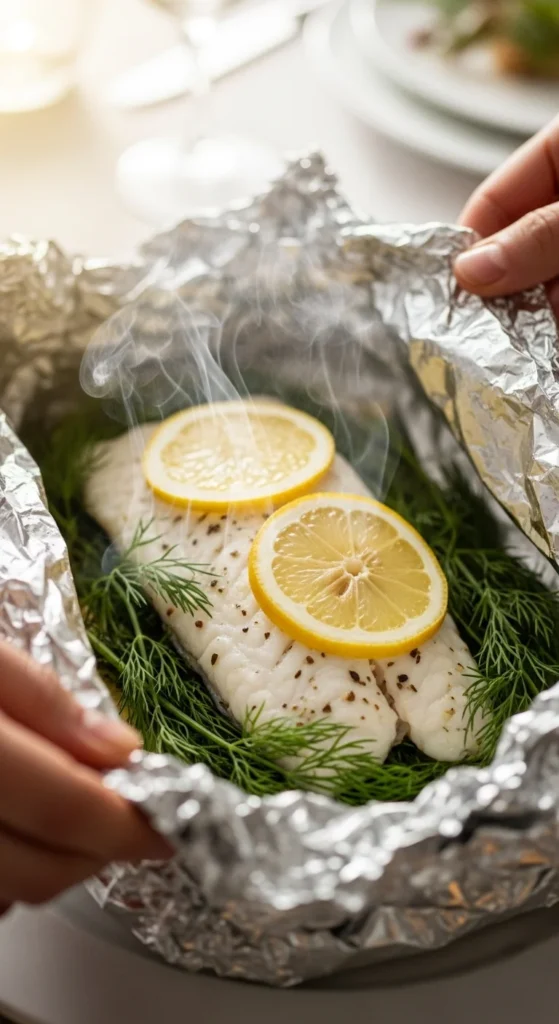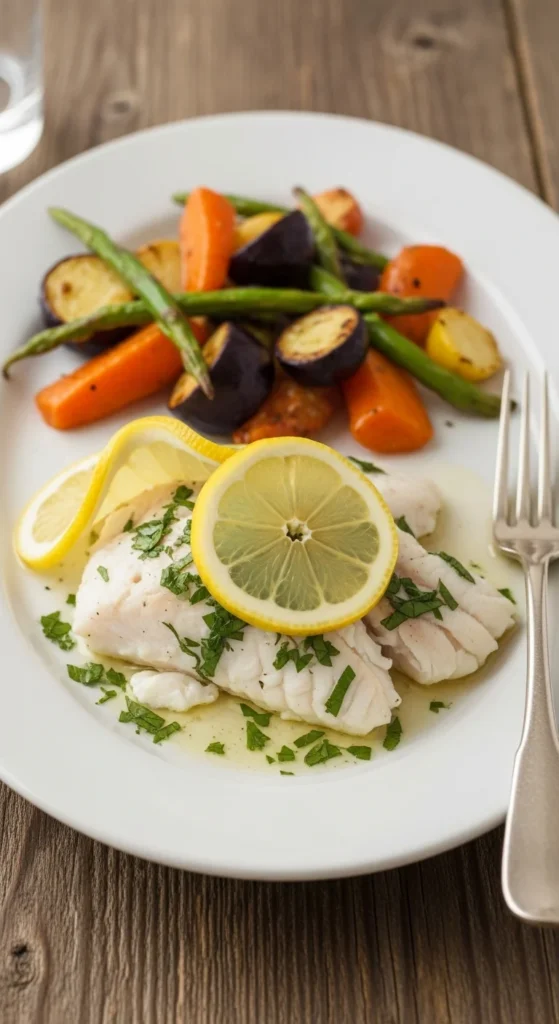There’s a fine line between perfectly flaky fish and something that feels like cardboard. The secret? Gentle heat, moisture, and a few smart cooking tricks that keep the flavor locked in. Whether you’re searing salmon or baking cod, mastering the balance between texture and tenderness is easier than you think.

Start with the Right Fish
Before you even turn on the stove, your success starts with the fish you choose.
- Freshness matters. Look for bright, clear eyes (if whole), firm flesh, and a clean ocean scent—not “fishy.”
- Opt for fatty varieties like salmon, trout, or mackerel if you’re new to cooking fish. Their natural oils help protect against drying out.
- Lean fish like cod, tilapia, or halibut are delicious but require a bit more care and moisture to stay tender.

Bring It to Room Temperature First
Cold fish straight from the fridge tends to seize up in hot pans, causing uneven cooking. Let it rest at room temperature for about 15–20 minutes before cooking. This simple step helps the heat distribute evenly through the fillet, keeping the inside moist while the outside browns beautifully.
Pro tip: Pat the fish completely dry with paper towels before seasoning. Excess moisture will steam the fish instead of searing it, robbing you of that golden crust.
Master the Pan-Searing Technique
Pan-searing is one of the easiest and fastest ways to get juicy, flavorful fish. Here’s the process:
- Heat the pan over medium-high until it’s hot but not smoking.
- Add a small amount of high smoke point oil (like avocado or grapeseed).
- Lay the fish skin-side down (if it has skin) and don’t move it for 2–4 minutes. This lets the skin crisp up and naturally release from the pan.
- Flip once and cook another 2–3 minutes, depending on thickness.
Don’t overflip—it’s the number-one mistake that breaks up your fillets and releases moisture.

Bake for Foolproof Flakiness
If you’re nervous about overcooking fish in a pan, baking offers more control. The trick? Low and slow wins the game.
- Preheat your oven to 375°F (190°C).
- Place seasoned fillets on a parchment-lined baking sheet or dish.
- Add a drizzle of olive oil or a pat of butter for moisture.
- Bake for 10–15 minutes per inch of thickness, or until it flakes easily with a fork.
If you want to get fancy, wrap your fish in foil or parchment with herbs, lemon slices, and a splash of white wine or broth. The steam inside locks in flavor and tenderness.

Timing Is Everything
Fish goes from perfect to overcooked in under a minute. To avoid that heartbreak:
- Watch for the color change. The fish will turn opaque as it cooks—once it’s mostly opaque, it’s done.
- Use a thermometer if you can. The sweet spot for most fish is 130–140°F (54–60°C).
- Check early. It’s better to peek too soon than too late; you can always give it another minute.
Remember: residual heat continues to cook the fish even after you remove it from the pan or oven.
Add Moisture and Flavor with Sauce
Sauces aren’t just for taste—they help keep fish juicy too. Here are a few quick options:
- Lemon butter sauce: Melt butter, squeeze in fresh lemon juice, and whisk in a pinch of garlic and herbs.
- Creamy dill sauce: Mix Greek yogurt, lemon zest, and fresh dill for a light, tangy pairing.
- Soy-ginger glaze: Combine soy sauce, honey, garlic, and grated ginger for an Asian-inspired finish.
Drizzle right before serving for the best results.

Common Mistakes to Avoid
Even pros slip up sometimes. Here’s how to dodge the big ones:
- Cooking too hot: High heat dries out delicate fish fast.
- Skipping rest time: Let the fish rest for a minute or two before serving to lock in juices.
- Over-seasoning: Fish has a delicate flavor—let it shine with just salt, pepper, and a touch of citrus.
Final Touch: Presentation Matters
Serve your fish on a warm plate with fresh herbs or microgreens. Add a few lemon wedges for brightness and maybe a sprinkle of flaky sea salt for texture. A beautiful presentation makes every bite feel like a restaurant-quality meal.

The Takeaway
Cooking fish that’s flaky, not dry, is all about control—gentle heat, the right timing, and a touch of moisture. Once you learn to read the signs of doneness and respect the fish’s natural texture, you’ll never fear overcooking again.



Leave a Reply